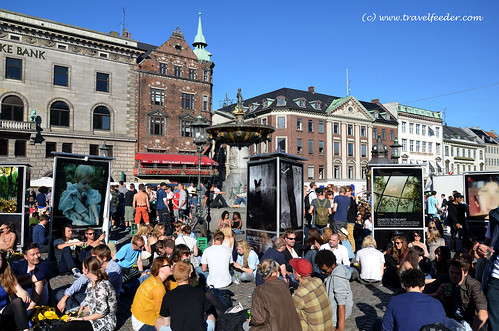From Travel to Photo – Chapter 2 – For how long should I travel Europe?
This is the second chapter of my mini guide on how to plan your travel to Europe. In chapter one, we have learned how to find the best time to visit Europe. For this chapter, we will continue to discuss on how to fix the length of Europe travel. To successfully plan an Europe vacation trip, fixing an optimum period of time for how long should I travel Europe is as important as choosing the best time to fly. It is the second element of our travel plan to Europe, after timing.
Europe is a huge continent. It consists of 50 countries, 27 of which are member states of the European Union, and covers an area of approximately 10 Million Km²! If travelers were to explore the whole Europe with hundreds of cities of interest, they will need years to do so! Eventhough not all cities in Europe are tourist frequented destinations, travelers will still need at least a year or four seasons to cover them all at one time! However, this is not advisable for a budget traveler, since traveling Europe is expensive and time consuming. Likewise, there are other factors limiting your holiday period in Europe, such as the following few.
Factors deciding the maximum period of your holiday travel to Europe
- Different season, different climate. If you have decided in Chapter 1, the best time of year for you to travel Europe, it will mean that you are looking at visiting Europe in certain season of the year, which last for only 3 months. Europe is a continent with 4 distinct seasons in a year (with temperature varies as much as 30°c between Summer and Winter). That said, if you travel to Europe for more than 3 months, it will encompass 2 seasons of a year, and you will need extra sets of clothing to cope with that 2 different climate, extra burden and extra cost to your luggage. We call it uneconomical. So it would always be better to travel to different parts of Europe in a few year but in the same season of year. For instance, I traveled to Central Europe last Spring and then Western, Eastern and Northen Europe this Spring, since Spring is my favourite time to see lush greenery and colourful flowers in Europe.
- Visa validity. There are 39 countries whose nationals do not need a visa to stay in Europe for up to 3 months, which include US, Japan, Australia and others. Other nationals will need to apply for a visa before flying to Europe. Validity of Visa is normally 3 months, albeit some are 6 months. So, it is advisable to plan your Europe trip for a period of not exceeding 3 months, in order to avoid hassle in extending your visa or of being blocked in entry border.
- Annual leave. Generally, annual leaves for employees are around 2 weeks, or 14 days. Taking leaves for more than 2 weeks will need either cumulative leaves brought forward from previous years or, to apply for unpaid leaves. If you are traveling every year, with no leave being accumulated from previous years, the safest traveling period to Europe is 2 weeks or 14 days.
- Health condition. Exploring historic sites after sites in European cities by walking is absolutely possible and advisable since most of the travel attractions are within walking distance in any European city. Having said that, a considerably fit and healthy body is still required to do that much walking on Europe trip. How far and long one traveler could go depends on how fit he or she is. Traveling Europe with walking for 20 days can be quite tiring, mind you. 🙂 Even if you are fit for that long period of traveling time, accidents do happen. Travel Insurance could cover any emergency medication in overseas. However, you need to pay much higher premium for longer travel. Check with your insurance agent to see if there is maximum period of travel.
So, we know the maximum period for traveling Europe hassle free should be 3 months (or one season), but for how long would be the optimum?
Let’s answer this question: “How many days should we stay in each city?”
In general, I would suggest 3 to 7 days. For small cities, we need at least 1 day to get ourselves into the city environment, another day at least for sight seeing, and 1 remaining day to explore further and deeper into the city. The larger the city, the more days we need, normally up to 7 days per city. Since we are traveling Europe in a budget style, we try to plan our itinerary perfectly to have sufficient time to explore each city we are going, but not wasting anymore time in doing nothing, except for relaxation after a long trip.
It is not economical staying too short in a city either, since transportation cost carries a substantial percentage in our total cost of Europe travel, and it’s a fixed cost, means we must spend such money to travel from one city to another. Let’s elaborate briefly with sample equations below (more detail budget planning will be discussed in next chapter), with some assumption on fixed transportation (T), variable foods (F) and accommodations (A) costs:
1) Travel 5 cities in 5 days (1x): €625.00 (T) + €350.00 = €975.00 (1x)
2) Travel 5 cities in 15 days (3x): €625.00 (T) + €1,050.00 = €1675.00 (1.7x)
3) Travel 5 cities in 30 days (5x): €625.00 (T) + €2,100.00 = €2,725.00 (2.8x)
The above result clearly shows that with transportation a fixed cost, the longer you stay in a city, the lower average daily cost you would need to allow for each day.
So you should have your own answer for the above question by now.
Next, you can start fixing a period to travel Europe which is best suited you. Remember that what we have discussed here are merely for your reference, and I’m here to only guide you through the planning process. The final decision on the total number of days you are going to spend in Europe is all up to your needs and desire, albeit some of the following factors may justify your decision,
- Cost per city – We now know the average daily cost is getting lower when you travel longer period, but they still escalate along your stay in days until to a sum that you could afford to spend in each city, and that is the total cost per city for you;
- Time available – Check you office planner to decide how much time is possible for you to take leave off your work duty.
- Health and strength – Are you on periodic medications? Is your pregnant wife going to due soon? How long can you withstand the chilly weather in Winter? For how long could your travel insurance covers you?
- Number of cities of interest – Number of cities multiplied by number of days in that city and you will get the total period of your Europe trip. For example, you will need at least 15 days in Europe if you plan to visit 5 cities back to back.
With all the above information and tips, you should by now be able to fix a date to depart for Europe and fix a date to return back from Europe. Next chapter we will guide you to fix a budget. If you can’t decide a period just yet due to budget constraint, skip this chapter and jump to chapter 3 to fix your budget first. They are interrelated like a chicken and an egg. 🙂 – Travel Feeder, your ultimate guide to Europe travel







Come to Naples we have th best Pizza to the world, Storic City, Mount Vesuvius and Awesome GIRLS……:-)
- February 25, 2016